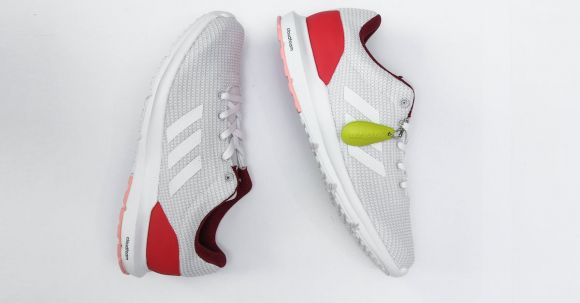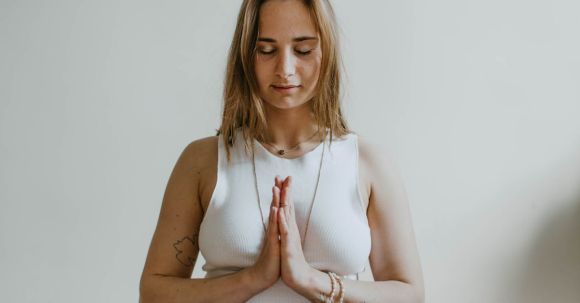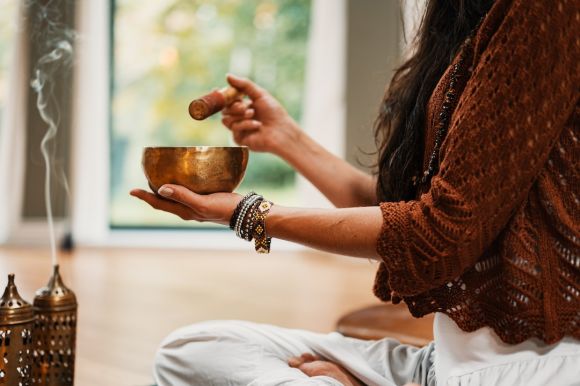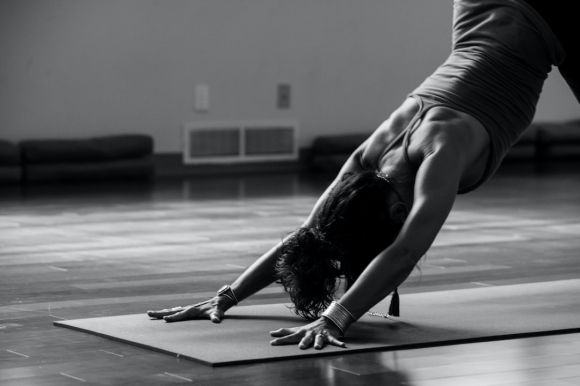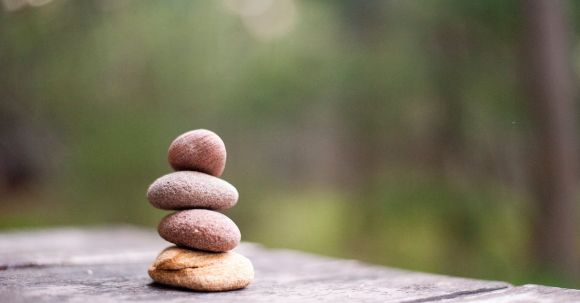In the fast-paced and demanding world we live in, it is easy to get caught up in the chaos and neglect our own well-being. However, taking the time to cultivate self-awareness and self-love is essential for our overall happiness and fulfillment. One powerful way to achieve this is through the practice of yoga and meditation. These ancient practices offer a multitude of benefits for the mind, body, and soul, helping us connect with our inner selves and develop a deeper sense of self-awareness and self-love.
Yoga and meditation
In today's fast-paced world, it's easy to fall into the trap of neglecting our physical and mental well-being. We often find ourselves rushing from one task to another, constantly under stress, and ignoring the needs of our bodies. However, taking the time to engage in activities that promote a healthy lifestyle, such as yoga and meditation, can be extremely beneficial for boosting our metabolism.
Understanding Metabolism
Before diving into how yoga and meditation can boost your metabolism, it's essential to understand what metabolism actually means. Metabolism refers to the chemical processes that occur within our bodies to maintain life. It involves converting food into energy, which is then used for various bodily functions, such as breathing, digestion, and even thinking.Yoga: A Mind-Body Connection
One of the primary benefits of practicing yoga is its ability to create a harmonious connection between the mind and body. Yoga involves a series of physical postures, breathing exercises, and meditation techniques that help release tension, improve flexibility, and promote relaxation. By engaging in regular yoga practice, you can reduce stress levels, which in turn can enhance your metabolism.Stress and Metabolism
When we experience stress, our bodies release cortisol, also known as the stress hormone. Cortisol can have a negative impact on our metabolism, leading to weight gain and slower digestion. By practicing yoga and incorporating deep breathing exercises, you can activate the body's relaxation response, reducing cortisol levels and improving your metabolism.Poses for Boosting Metabolism
Certain yoga poses are particularly effective for boosting metabolism. The "Sun Salutation" sequence is a dynamic flow that stretches and strengthens the entire body. It helps stimulate the digestive system, increase blood circulation, and revitalize the body's energy. Other poses, such as the "Camel Pose" or "Bridge Pose," can also help activate the thyroid gland, which plays a crucial role in regulating metabolism.Meditation: Calming the Mind
In addition to yoga, meditation is another powerful tool for boosting your metabolism. Meditation involves focusing your attention and eliminating the stream of thoughts that may be causing stress and anxiety. By practicing meditation regularly, you can reduce your stress levels and improve your overall well-being.Mindful Eating
One way in which meditation can positively impact your metabolism is by promoting mindful eating. Often, we eat mindlessly, not paying attention to the food we consume or the signals our bodies give us when we are full. Through meditation, you can develop a heightened sense of awareness, allowing you to make healthier food choices and eat in moderation. This can help regulate your metabolism and maintain a healthy weight.Breathing Techniques for Metabolism
Just as deep breathing exercises can reduce stress, they can also have a direct impact on your metabolism. Breath control, or pranayama, is an essential aspect of yoga and can be practiced independently for its metabolic benefits. Techniques such as "Kapalabhati" or "Bhastrika" involve rapid, forceful breathing that can increase oxygen intake and stimulate the metabolic rate.Incorporating Yoga and Meditation into Your Routine
To reap the benefits of yoga and meditation for boosting your metabolism, it's important to incorporate them into your daily routine. Set aside a specific time each day for these practices, even if it's just for a few minutes. You can start with simple yoga poses and gradually increase the duration and intensity of your practice as you become more comfortable. Similarly, start with short meditation sessions and gradually extend the time as you build your focus and concentration.Final Thoughts
Boosting your metabolism is not just about shedding pounds; it's about promoting overall well-being. By incorporating yoga and meditation into your daily routine, you can reduce stress levels, improve digestion, and create a healthier mind-body connection. So, take a break from the hustle and bustle of life and invest in activities that nourish your body and soul.
Are you feeling tired, drained, and in need of a boost? Look no further than yoga flows to invigorate your body and rejuvenate your mind. Yoga is not just a physical exercise; it is a holistic practice that combines movement, breath, and meditation to promote overall well-being. In this article, we will explore how yoga flows can help you increase your energy levels and bring vitality back into your life.
1. Activate Your Body and Mind with Sun Salutations
Sun salutations, also known as Surya Namaskar, are a series of dynamic yoga poses that are performed in a flowing sequence. This energizing flow is a great way to start your day as it activates every muscle in your body and gets your blood flowing. By synchronizing your breath with movement, you awaken your senses and stimulate your nervous system, leaving you feeling refreshed and ready to take on the day.2. Fire Up Your Core with Power Yoga
Power yoga is a vigorous and challenging form of yoga that focuses on building strength and stamina. Through a series of dynamic poses and intense flows, power yoga engages your core muscles and increases your metabolic rate. This not only strengthens your body but also boosts your energy levels. By practicing power yoga regularly, you will notice an improvement in your overall vitality and endurance.3. Awaken Your Energy Centers with Kundalini Yoga
Kundalini yoga is a powerful practice that aims to awaken and balance the energy centers in your body, known as chakras. By incorporating dynamic movements, breathwork, and chanting, Kundalini yoga helps to release stagnant energy and promote the free flow of vital life force energy. This can result in increased energy levels, heightened awareness, and a greater sense of vitality.4. Restore and Recharge with Yin Yoga
Sometimes, what your body truly needs is deep relaxation and restoration. Yin yoga is a slow-paced style of yoga that involves holding poses for an extended period, typically 3-5 minutes. This gentle practice targets the connective tissues and joints, helping to release tension and improve flexibility. By allowing yourself to surrender and let go, you recharge your energy and replenish your vitality.5. Breathe Your Way to Energy with Pranayama
Pranayama, or yogic breathing exercises, are an essential part of any yoga practice. By consciously controlling your breath, you can influence your energy levels and enhance your vitality. Practices like Kapalabhati (skull shining breath) and Bhastrika (bellows breath) are particularly invigorating and can help to awaken your senses and boost your energy. Incorporating pranayama into your daily routine can have a profound effect on your overall well-being. Incorporating yoga flows into your daily or weekly routine can have a transformative impact on your energy levels and vitality. Whether you choose to start your day with sun salutations, challenge yourself with power yoga, awaken your energy centers with Kundalini yoga, restore with Yin yoga, or harness the power of breath with pranayama, each practice offers unique benefits that can help you feel more alive and energized. So, the next time you find yourself feeling drained or in need of a pick-me-up, roll out your mat and give yourself the gift of a yoga flow. Allow the movements, breath, and meditation to awaken your body and mind, and watch as your energy and vitality soar to new heights. Embrace the power of yoga flows and let them be your secret weapon for boosting your energy and living life to the fullest.
Our digestive system plays a crucial role in our overall health and well-being. When our digestion is not functioning optimally, it can lead to a range of issues such as bloating, constipation, and even more serious conditions like irritable bowel syndrome (IBS). While there are several factors that can affect our digestion, one effective and natural way to improve gut health is through the practice of specific yoga poses. In this article, we will explore some of these poses and how they can benefit our digestive system.
1. Downward-Facing Dog (Adho Mukha Svanasana)
Downward-Facing Dog is a popular yoga pose that not only stretches and strengthens the entire body but also stimulates digestion. This pose helps to increase blood flow to the abdominal area, which can aid in the digestion process. It also helps to relieve gas and bloating by gently massaging the digestive organs.2. Seated Forward Bend (Paschimottanasana)
Seated Forward Bend is a calming pose that stretches the spine and stimulates the digestive organs. This pose helps to relieve constipation and improve digestion by increasing blood flow to the abdominal area. It also helps to relax the mind and reduce stress, which can have a positive impact on digestion.3. Supine Twist (Supta Matsyendrasana)
Supine Twist is a gentle twisting pose that helps to improve digestion by massaging the internal organs and increasing blood flow to the abdominal area. This pose also helps to relieve bloating and gas and can be particularly beneficial for those with IBS.4. Bridge Pose (Setu Bandhasana)
Bridge Pose is a backbend that not only strengthens the back and legs but also stimulates the digestive system. This pose helps to improve digestion by increasing blood flow to the abdominal area and massaging the digestive organs. It also helps to relieve constipation and can be beneficial for those with sluggish digestion.5. Cat-Cow Pose (Marjaryasana-Bitilasana)
Cat-Cow Pose is a gentle flowing sequence that helps to improve digestion by massaging the digestive organs and increasing flexibility in the spine. This pose also helps to relieve tension in the back and neck, which can be beneficial for those who hold stress in these areas.6. Extended Triangle Pose (Utthita Trikonasana)
Extended Triangle Pose is a standing pose that stretches the entire body and stimulates the digestive organs. This pose helps to improve digestion by increasing blood flow to the abdominal area and massaging the digestive organs. It also helps to relieve constipation and can be beneficial for those with digestive issues. Incorporating these yoga poses into your daily routine can have a significant impact on your digestion and gut health. However, it's important to remember that consistency is key. Practicing these poses regularly, along with maintaining a healthy diet and lifestyle, can help to optimize your digestive function. In conclusion, yoga poses can be a powerful tool in improving digestion and gut health. The gentle stretching and massaging of the digestive organs in these poses can help to relieve bloating, constipation, and other digestive issues. By incorporating these poses into your daily routine, you can support your digestive system and promote overall well-being. So, roll out your yoga mat and give these poses a try for a happier and healthier gut.
In today's fast-paced world, it can be challenging to stay focused and productive. Our minds are constantly bombarded with distractions, and it's easy to get overwhelmed or lose track of our goals. However, there is a simple and effective way to enhance your focus and productivity – regular meditation practice.
Meditation has been practiced for thousands of years and is known for its numerous benefits to the mind and body. It involves focusing your attention and eliminating the stream of thoughts that often clutter our minds. By practicing meditation regularly, you can develop a sense of calm and clarity that will greatly improve your ability to concentrate and get things done.
Reduce Distractions and Improve Concentration
One of the main reasons why meditation is so effective in improving focus and productivity is its ability to reduce distractions. When we meditate, we learn to let go of the thoughts and worries that often pull us away from the task at hand. This allows us to stay fully present and focused on what we are doing. By training our minds to stay focused during meditation, we can carry this skill into our daily lives. Whether it's studying for an exam, working on a project, or completing everyday tasks, the ability to concentrate without being easily distracted is crucial for productivity. Regular meditation practice can help you develop this skill and become more efficient in your work.Enhance Cognitive Function and Mental Clarity
In addition to reducing distractions, meditation has also been found to enhance cognitive function and mental clarity. When we meditate, we activate and strengthen the prefrontal cortex, which is responsible for executive functions such as decision-making, problem-solving, and working memory. By regularly practicing meditation, you can improve these cognitive functions, making it easier to stay focused, make sound decisions, and solve problems efficiently. This increased mental clarity will not only enhance your productivity but also allow you to approach tasks with a greater sense of purpose and creativity.Manage Stress and Increase Energy
Stress is one of the biggest productivity killers. When we are stressed, our minds become scattered, making it difficult to concentrate and perform at our best. Regular meditation practice can help you manage stress effectively and increase your energy levels. Meditation activates the relaxation response in the body, reducing the production of stress hormones such as cortisol. By practicing meditation regularly, you can train your body to respond more calmly to stressful situations, allowing you to maintain focus and productivity even in high-pressure environments.Boost Overall Well-being and Motivation
Lastly, regular meditation practice can have a profound impact on your overall well-being and motivation. When we take the time to quiet our minds and connect with our inner selves through meditation, we cultivate a sense of inner peace and happiness. This sense of well-being not only improves our mental state but also motivates us to work towards our goals. By regularly practicing meditation, you can tap into this inner source of motivation and drive, leading to increased focus, productivity, and fulfillment in all aspects of your life. In conclusion, regular meditation practice is a powerful tool for improving focus and productivity. By reducing distractions, enhancing cognitive function, managing stress, and increasing overall well-being, meditation can help you achieve your goals with greater efficiency and ease. So, why not start incorporating meditation into your daily routine and experience the transformative benefits it has to offer?
Chronic pain can be debilitating, affecting every aspect of our lives. It can make simple daily activities seem impossible and leave us feeling frustrated and exhausted. While there are many treatments available, finding relief can sometimes be a challenge. However, there is one practice that has been proven to provide relief for chronic pain: gentle yoga stretches.
Understanding Chronic Pain
Chronic pain is defined as any pain that lasts for more than 12 weeks. It can be caused by a variety of conditions such as arthritis, fibromyalgia, or nerve damage. The constant pain can lead to muscle tension, decreased mobility, and overall decreased quality of life.The Benefits of Gentle Yoga Stretches
Yoga has been practiced for centuries and is known for its physical and mental benefits. When it comes to chronic pain, gentle yoga stretches can provide relief in several ways: 1. Increased Flexibility: Chronic pain often leads to stiffness and decreased flexibility. Gentle yoga stretches can help improve flexibility, reducing muscle tension and increasing range of motion. 2. Strengthening Muscles: Weak muscles can contribute to chronic pain. Yoga stretches target specific muscle groups, helping to strengthen them and provide support for the affected areas. 3. Improved Blood Circulation: Chronic pain can disrupt blood flow, leading to further complications. Gentle yoga stretches help improve blood circulation, allowing for better oxygen and nutrient delivery to the affected areas. 4. Stress Reduction: Chronic pain is often accompanied by stress and anxiety. Yoga, with its focus on deep breathing and mindfulness, can help reduce stress levels, promoting relaxation and overall well-being. 5. Mind-Body Connection: Yoga emphasizes the connection between the mind and body. By practicing gentle yoga stretches, individuals can learn to listen to their bodies and respond accordingly, leading to better pain management.Gentle Yoga Stretches for Chronic Pain Relief
Now that we understand the benefits of gentle yoga stretches, let's explore a few poses that can provide relief for chronic pain: 1. Child's Pose: Begin by kneeling on the floor and slowly lower your upper body to rest on your thighs. Extend your arms forward and rest your forehead on the mat. This pose gently stretches the lower back and hips, providing relief for those with chronic back pain. 2. Cat-Cow Pose: Start on all fours, with your hands directly under your shoulders and knees under your hips. Inhale, arch your back, and lift your head and tailbone towards the ceiling (cow pose). Exhale, round your back, tuck your chin, and draw your navel towards your spine (cat pose). This gentle movement helps to relieve tension in the spine and improve flexibility. 3. Downward Facing Dog: Begin on all fours and lift your hips up and back, straightening your legs and arms to form an inverted V shape. This pose stretches the entire body, including the back, hamstrings, and shoulders. It also helps to improve blood circulation and relieve tension. 4. Supine Twist: Lie on your back and bend your knees, keeping your feet flat on the floor. Extend your arms out to the sides, palms facing down. Slowly lower both knees to one side, keeping your shoulders grounded. This pose gently stretches the lower back and helps to relieve tension in the spine.Conclusion
Gentle yoga stretches can be a powerful tool in managing chronic pain. By incorporating these stretches into your daily routine, you can experience increased flexibility, improved muscle strength, better blood circulation, reduced stress, and an overall improved quality of life. Remember to always listen to your body and modify the poses as needed. Consult with a certified yoga instructor or healthcare professional before beginning any new exercise regimen, especially if you have pre-existing medical conditions. Give gentle yoga stretches a try and discover the relief they can bring to your chronic pain.
Yoga is not just a physical practice; it is a holistic approach that combines movement, breath, and mindfulness. One of the many benefits of practicing yoga is its ability to release tension and tightness in the body. Through a series of stretches and poses, yoga helps to release built-up stress and promotes relaxation. In this article, we will explore some yoga stretches that can help you release tension and tightness in your body.
Stretching the Neck and Shoulders
The neck and shoulders are common areas where tension tends to accumulate. To release this tension, start by gently dropping your chin towards your chest and slowly roll your head from side to side. As you do this, breathe deeply and focus on releasing any tightness you may feel in your neck and shoulders. After a few rounds of neck rolls, you can also try bringing your ear towards your shoulder on each side, taking care not to strain or force the movement.Opening the Chest and Heart
Many people spend hours sitting at a desk or hunched over a computer, which can lead to tightness in the chest and shoulders. To counteract this, try practicing a simple chest opener stretch. Stand tall with your feet hip-width apart, interlace your fingers behind your back, and gently squeeze your shoulder blades together. Take a deep breath in as you lift your chest towards the ceiling, exhaling as you release. This stretch helps to open up the chest, release tension, and improve posture.Releasing Tension in the Hips and Lower Back
Sitting for extended periods can also cause tightness in the hips and lower back. To release tension in these areas, try practicing the Pigeon Pose. Start in a tabletop position, slide your right knee towards your right wrist, and extend your left leg straight back. Square your hips as much as possible and gently fold forward over your right leg. Breathe deeply and hold the pose for a few breaths before switching sides. Pigeon Pose helps to release tension in the hips and lower back, improving flexibility and relieving tightness.Relaxing the Whole Body with Child's Pose
Child's Pose is a restorative stretch that helps to release tension in the entire body. Start by kneeling on the floor with your knees hip-width apart and your big toes touching. Sit back on your heels and fold forward, resting your forehead on the mat. Stretch your arms out in front of you or bring them alongside your body, whatever feels most comfortable. Breathe deeply and surrender your weight to the ground, allowing your body to relax fully. Stay in this pose for as long as you like, soaking up the calming and tension-releasing benefits.Conclusion: Find Your Perfect Stretch
Yoga stretches offer an effective way to release tension and tightness in the body. By incorporating these stretches into your regular practice, you can experience increased flexibility, improved posture, and a greater sense of relaxation. Remember to listen to your body and stop if you feel any pain or discomfort. With time and practice, you will find the perfect stretches that work for you and help you release tension and tightness, leaving you feeling refreshed and rejuvenated.
In today's fast-paced world, finding moments of calm and clarity can be challenging. However, incorporating meditation techniques into your daily routine can help enhance both your creativity and intuition. Meditation is a powerful tool that can help quiet the mind, cultivate focus, and tap into your inner wisdom. By practicing these techniques regularly, you can unlock your full potential and discover new depths of creativity and intuition.
Meditation and Creativity
Creativity is often seen as a mysterious and elusive quality that only a select few possess. However, everyone has the potential for creativity within them. Meditation can help unleash this creative energy by quieting the noise of the mind and allowing space for new ideas to emerge. When we meditate, we enter a state of deep relaxation and heightened awareness. This state of mind opens up new channels of creativity and allows us to tap into our subconscious mind. By quieting the inner critic and letting go of self-doubt, we can access our true creative potential. One meditation technique that can specifically enhance creativity is known as "open awareness." In this practice, instead of focusing on a specific object or thought, we simply observe our thoughts and sensations without judgment. This state of open awareness allows our minds to wander freely, leading to new connections and insights. It is in this relaxed and open state that our most innovative ideas can emerge.Meditation and Intuition
Intuition is often described as a gut feeling or a deep knowing that arises without logical reasoning. It is our inner guidance system that can lead us towards making the right decisions and choices in life. Just like creativity, intuition can be strengthened and honed through meditation. One powerful meditation technique for developing intuition is known as "body scanning." In this practice, we bring our attention to different parts of our body, starting from the top of the head and moving downwards. As we scan our body, we observe any sensations or feelings that arise without judgment. This practice helps us develop a deeper awareness of our body's wisdom and the subtle signals it sends us. By regularly practicing body scanning, we become more attuned to our intuition. We learn to trust our instincts and make decisions based on our inner guidance rather than solely relying on logical reasoning. This heightened intuition can be invaluable in both personal and professional settings, allowing us to navigate life with greater ease and confidence.The Benefits of Regular Meditation
In addition to enhancing creativity and intuition, regular meditation offers a multitude of other benefits. It can reduce stress, improve focus and concentration, boost overall well-being, and increase self-awareness. By dedicating just a few minutes each day to meditation, you can experience these transformative effects and unlock your full potential.Conclusion: Embracing Meditation as a Path to Creativity and Intuition
In a world filled with distractions and noise, meditation offers a sanctuary for cultivating creativity and intuition. By incorporating meditation techniques into your daily routine, you can tap into your inner wisdom, unlock your creative potential, and make decisions guided by intuition. Whether you are an artist, entrepreneur, or simply seeking personal growth, meditation can be a powerful tool for enhancing your life in countless ways. Embrace the practice of meditation, and watch as your creativity and intuition flourish.
In today's fast-paced and stressful world, finding ways to enhance mindfulness and reduce stress has become more important than ever. One powerful tool that has been practiced for centuries is meditation. Meditation is the practice of focusing one's mind and achieving a state of calm and relaxation. It can be done in various ways, such as sitting in a quiet room, focusing on the breath, or repeating a mantra. In this article, we will explore the benefits of meditation and how it can help enhance mindfulness and reduce stress.
Improving Mindfulness through Meditation
Mindfulness is the state of being fully present and aware of one's thoughts, feelings, and surroundings. It is about paying attention to the present moment without judgment. Meditation is a proven technique to cultivate mindfulness. By practicing meditation regularly, individuals can train their minds to be more present and aware. This can lead to a greater sense of clarity and focus in daily life. One of the ways meditation enhances mindfulness is by promoting self-awareness. During meditation, individuals are encouraged to observe their thoughts and emotions without getting caught up in them. This practice helps develop a non-judgmental attitude towards one's inner experiences. Over time, this increased self-awareness can extend beyond the meditation cushion and into everyday life, allowing individuals to respond to stressors more skillfully.Reducing Stress through Meditation
Stress has become a common part of modern life, and its negative effects on both physical and mental health are well-documented. Fortunately, meditation has been shown to be an effective tool for reducing stress. When we meditate, our bodies enter a state of deep relaxation, which triggers the relaxation response. This response counters the physiological effects of stress, such as increased heart rate and elevated cortisol levels. Moreover, meditation helps individuals develop a greater sense of resilience and equanimity in the face of stress. By practicing mindfulness during meditation, individuals learn to observe their stressors without getting overwhelmed by them. This can lead to a shift in perspective, allowing individuals to respond to stress in a more calm and composed manner.Tips for Starting a Meditation Practice
If you're new to meditation, getting started can feel overwhelming. However, with a few simple tips, you can begin your meditation journey with ease: 1. Start with short sessions: Begin by setting aside just a few minutes each day for meditation. As you become more comfortable, gradually increase the duration of your sessions. 2. Find a quiet space: Choose a quiet and comfortable space where you can meditate without distractions. This could be a corner in your home, a park, or even a quiet room at work. 3. Focus on your breath: One of the simplest and most effective meditation techniques is to focus on your breath. Pay attention to the sensation of your breath as you inhale and exhale, allowing it to anchor you in the present moment. 4. Be patient and kind to yourself: Remember that meditation is a practice, and it takes time to develop. Be patient with yourself and approach your practice with kindness and compassion. In conclusion, meditation is a powerful tool for enhancing mindfulness and reducing stress. By practicing meditation regularly, individuals can cultivate greater self-awareness, develop resilience, and respond to stressors more skillfully. So, why not carve out a few minutes each day to sit in stillness and experience the transformative benefits of meditation?
In today's fast-paced and chaotic world, finding balance and tranquility can be a daunting task. The demands of work, family, and daily responsibilities often leave us feeling overwhelmed and stressed. However, there is a powerful tool that can help us navigate through the chaos and find inner peace – yoga and meditation. These ancient practices offer a sanctuary amidst the turmoil, allowing us to cultivate a sense of balance and tranquility in our lives.

